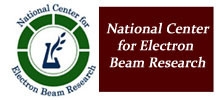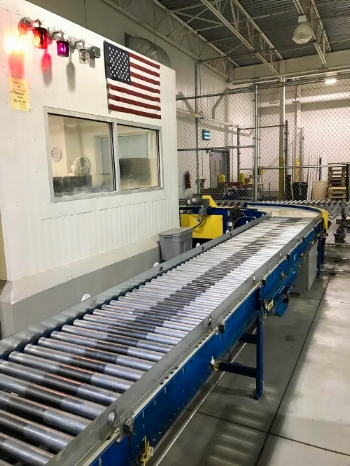The Electron Beam Facility
The Electron Beam Research Facility at Texas A&M University is a dual modality facility. There are 2 vertically mounted opposing 10 MeV (Million Electron Volt), 18 Kilowatt Electron Beam Linear Accelerators (LINAC) and a single horizontally mounted 5 MeV, 15 Kilowatt X-Ray Linear Accelerator. Energies from these radiation sources are too low to induce radioactivity in any material, including food.
In the E-Beam Mode, electrons are accelerated using either one or two 10 MeV 18 kW S-Band microwave-based linear accelerators. The choice to use one or two E-Beam sources depends on the research question, the product dimensions, the density of the materials, and the expected dose distribution within the product. During commercial irradiation of ground beef for example, both E-Beam sources are utilized to obtain a very uniform dose distribution. A major advantage of using E-Beam is its relatively very high dose rate which translates into high product throughputs
In the X-Ray Mode, electrons are accelerated using a 5 MeV, 15 kW LINAC and the electrons coming out of the LINAC window strike against a high atomic number material (tantalum) to generate X-rays. The advantage of using X-rays in some situations is its ability to penetrate deeper into the product (as compared to E-Beam). However, there are limitations to X-ray for example its dose-rate which is much less than that of E-Beam. In some situations for example phytosanitary applications and in blood irradiation the use of X-rays to generate low doses may be optimal.
The A&M research facility utilizes a single conveyance system to move the product in and out of the process chamber. All LINACs and conveyers are controlled with Allen Bradley Programmable Logic Control (PLC) software. This software, along with RS View Human Interface software, enables the electronic pasteurization process to be virtually automated and very tightly controlled with few staffing requirements.
E-Beam Control Room The E-Beam irradiation facility is unique in that it has been USDA-FSIS approved for commercial irradiation of food as well as to handle research materials. The ability to do so has been achieved by the facility’s strict adherence to rigorous SOPs that clearly separate research activities from commercial activities.
Two distinct modes of operation exist, one for research and one for consumable foods. No research irradiation will take place during commercial food irradiation. Research samples enters the facility through a separate entrance where the packaging is inspected prior to the samples being accepted. The SOPs for research sample transportation to the facility and the SOP for packaging research samples have been thoroughly reviewed by Texas A&M University’s Office of Biosafety to prevent accidental spill or leakage of samples.
Commercial food products that are ultimately sold to the public, enter into a USDA/FSIS inspected area and are retained in that area throughout processing. These products are reloaded onto the truck or conveyance after processing and are not stored on premises. The irradiation process and the accompanying dosimetry is performed under both USDA-FSIS and USDA-APHIS approved protocols. The facility is registered with the FDA.


